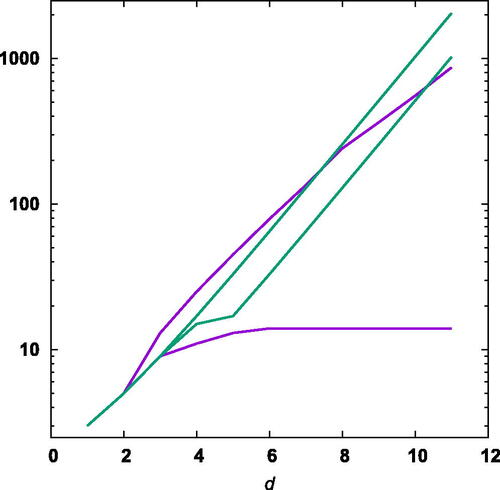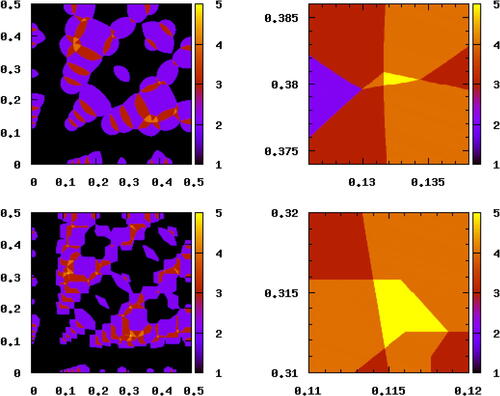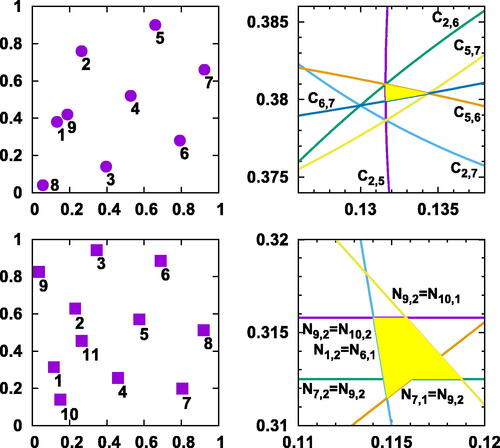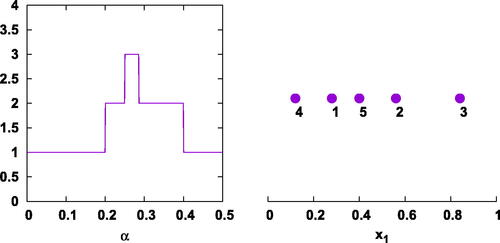Figures & data
Fig. 1 The best current upper and lower bounds for the maximum number of distances in the Euclidean norm (, purple) and the maximum norm (
, green) as a function of the dimension.

Fig. 3 Upper left: plot of in the α plane. The color (black for 1 to yellow for 5) indicates
, that is, the number of distinct shortest distances for N = 9, the given α and Euclidean metric. The region with five distances is too small to be visible and shown in the upper right panel. Lower left and right: Plots of
in the α plane, that is, for N = 11 and the maximum metric.

Fig. 4 Upper left: the Kronecker sequence for , showing five shortest distances in the Euclidean metric,
. Upper right: Formation of the curved triangle and other structure in the upper right panel of . Here, the two components of α are plotted, with
the circular arc defined by
in the Euclidean metric. Lower left: Kronecker sequence for
showing the five shortest distances in the maximum metric,
. Lower right: Formation of the pentagon in the lower right panel of . For
, see Equationequation (9)
(9)
(9) . The boundary of the pentagonal solution set consists of line segments where various combinations of these are equal.

Table 1 Examples where the bound equation (Equation15(15)
(15) ) is tight for the Euclidean norm.
Table 2 Examples where the bound equation (Equation15(15)
(15) ) is tight for the maximum norm.
Table 3 Examples with .

